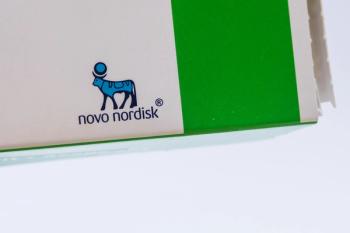
A drugstore on every corner: Turning points in community pharmacy
How did local drugstores end up at the mercy of drugmakers, pharmacy chains, insurance plans, and PBMs? Here's a look back from someone who watched it happen.
Truman LastingerPharmacy practice was a predictable and profitable business for pharmacists until the late 1960s–early 1970s.
Up to that point, manufacturers established drug prices primarily on the basis of the cost of production and drug promotion.
See also:
Detail men
At that time, there was no direct-to-consumer advertising, and the drug companies generally hired pharmacists to promote their products. Those pharmacists were called “detail men.” They educated the doctors about new drugs and gave them samples of their products.
The detail men encouraged retail pharmacists to open direct accounts so that their pharmacies could bypass the markup used by wholesalers.
Red Book, Blue Book
The manufacturers set yearly drug prices that were published in the RED BOOK and the BLUE BOOK. Wholesale distributers used those prices in their businesses.
Pharmacies could normally depend on the manufacturers to honor those prices.
A new pricing tactic
Until the late 1960s, the wholesalers would give a retail pharmacist a 2% discount if the bill were paid within 10 days of becoming due.
Then some small wholesalers began offering 10% discounts for their products, which were primarily generics with some brand-name drugs included. However, those drugs did not constitute a majority of their business. Those small wholesalers could demand deeper discounts from the manufacturers based on their successful sales of the products, so they could afford to offer the 10% discount on them.
In response to those small wholesalers, the large wholesalers demanded bigger discounts from the manufacturers so that they could also offer the 10% discounts. The manufacturers then had to raise their prices in order to compensate for the discounts.
A drugstore on every corner
At that time there were very few chains competing with independents for business in most of the rural areas and many larger cities.
A good many of the rural towns and cities had retail pharmacies on every corner, and pharmacists were generally successful businessmen.
Then things began to change.
Chain expansion begins
For many years Rexall and Walgreens had used franchises to further their business.
In the 1960s, Walgreens stopped franchising and bought out its members’ franchises, and Rexall went out of business.
Walgreens realized that because of its purchasing power, it could demand even greater discounts. This meant that manufacturers had to raise prices to compensate.
The professional fee and its consequences
In the mid-1960s, Medicaid came into being, and pharmacy associations and universities began to promote the idea of a professional fee.
At that time there were laws preventing retail businesses from agreeing on pricing their products. The acceptance of the professional fee in essence resulted in government price-fixing, which restricted drugstore profits.
As a result, increasing the prescription output was the only way to sustain profits.
More stores, more profits
Walgreens, Revco, Rite-Aid, CVS, etc. immediately realized that by increasing production they could increase their profits. They began building stores throughout the country. They also would move into a town and buy out the strongest independent pharmacy.
Soon there would be only one or maybe two independents left in each town. The smaller towns would end up with no independent pharmacies left.
Most of the pharmacists who were bought out accepted high paying jobs in those chain stores.
No more detail men
The laws barring drug manufacturers from advertising were rescinded, and those manufacturers then came up with a new way of promoting their products.
They no longer hired pharmacists to introduce and explain their new drugs, opting instead to hire young, good-looking ladies.
These young women did not call on retail stores. They only supplied doctors and their employees with lunches and branded souvenirs while promoting their drugs.
The coming of DTC
These new salespeople were not the only way manufacturers promoted their drugs. The drugmakers also began to use television.
Suddenly viewers were bombarded with drugs promoted over the air. Was it any surprise that they went to their doctors and demanded to have those wonder drugs prescribed for them?
Payers and profits
The proliferation of insurance plans and PBMs ensured that manufacturers would make a good profit.
When the insurance companies and PBMs demanded deeper discounts, manufacturers raised their prices to protect their profits.
Upping the AWP
Manufacturers were pleased to realize that they could increase prices regardless of their costs to produce drugs.
The costs of the television ads were easily covered by the increased average wholesale prices. By increasing these prices, manufacturers generated greater profits for themselves, the insurance companies, and the PBMs. The drugstores were left out.
The result
Some manufacturers are now increasing prices to ridiculous levels.
The insurance companies have to pay these costs, but negotiate enough discounts to offset them.
To further increase their profits, they also raise the premiums and co-pays required by their plans.
So in the long run, subscribers have to pay for higher drug costs through increased premiums as well as increased co-pays.
The way forward
As a result of these developments, the independent pharmacists who are left are moving toward compounding, niche, and specialty practices in order to maintain profits and to stay in business.
Truman Lastinger lives in Suwannee, Georgia. “
Newsletter
Pharmacy practice is always changing. Stay ahead of the curve with the Drug Topics newsletter and get the latest drug information, industry trends, and patient care tips.






































































































































